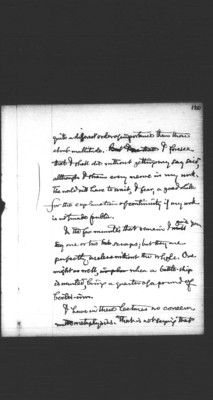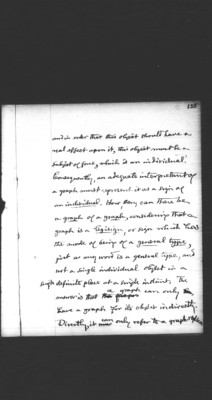Pages
91
120
quite a different order of importance than those about multitude. I foresee that I shall die without getting my say said, although I strain every nerve in my work. The world will have to wait, I fear, a good while for the explanation of continuity if my work is not made public.
In the few minutes that remain I give you one or two scraps; but they are perfectly useless without the whole. One might as well, when a battle-ship is wanted, bring a quarter of a pound of boiler-iron.
I have in these lectures no concern with metaphysics. That is not saying that
92
122
what I say has no importance for metaphysics. But for present purposes I care not what the real nature of time and space may be. But what I mean by a truly continuous line is a line upon which there is room for any multitude of points whatsoever. Then the multitude or what corresponds to multitude of possible points,— exceeds all multitude. These points are pure possibilities. There is no such gath. On a continuous line there are not really any points at all. Two lines which intersect, intersect in a point. That is true for the intersection breaks the continuity and makes a point where there was none before the intersection.
93
124
I am going to speak to you tonight about multitude or maniness and shall, I hope, be able to give you a glimpse of its logical importance. Some kinds of infinity will come under our notice, but I fear I shall not have time to speak of other kinds. I shall say a few words only concerning continuity. All of these subjects become intensely interesting and of great importance if one can go into them in some detail. But the difficulty with a course of this kind is that it is not possible to go deeply enough into the subjects to reach the really valuable parts of them.
I must begin by a few words concerning gramma graphs; because it is by means of
94
126
gamma graphs that I have been enabled to understand these subjects, and I do not believe it is possible really to understand them except by some method equivalent to that of gamma graphs.
In particular, it is absolutely necessary to representing the reasoning about these subjects that we should be able to reason with graphs about graphs and thus that we should have graphs of graphs.
It is essential to a graph or any other expression of a proposition that it should be represented by its interpretant sign to be true. But to say that it is true implies that it really is affected by its object;
95
128
and in order that this object should have a real effect upon it, this object must be a subject of force, which is an individual. Consequently, an adequate interpretant of a graph must represent it as a sign of an individual. How, then, can there be a graph of a graph, considering that a graph is a legisign, or sign which has the mode of being of a general type, just as any word is a general type, and not a single individual object in a single definite place at a single instant. The answer is that a graph can only have a graph for its object indirectly. Directly, it can only refer to a graph replica.




